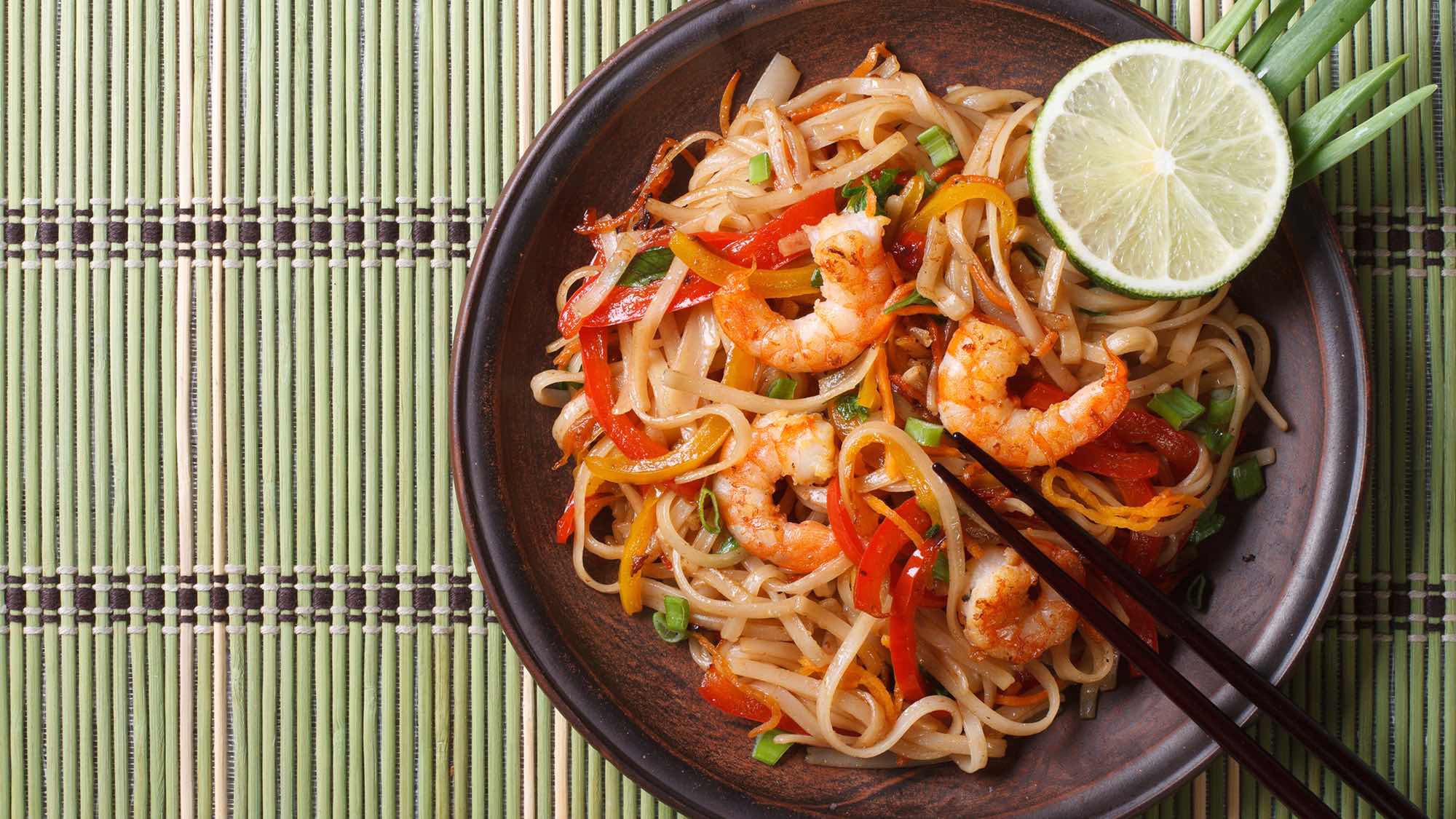The temptation of noodles
Noodles are a staple food in many cultures. They are made from unleavened dough which is stretched, extruded, or rolled flat and cut into one of a variety of shapes. While long, thin strips may be the most common, many varieties of noodles are cut into waves, helices, tubes, strings, or shells, or folded over, or cut into other shapes. Noodles are usually cooked in boiling water, sometimes with cooking oil or salt added. They are often pan-fried or deep-fried. Noodles are often served with an accompanying sauce or in a soup. Noodles can be refrigerated for short-term storage or dried and stored for future use. The material composition or geocultural origin must be specified when discussing noodles. The word derives from the German word Nudel.
History
The origin of noodles is Chinese. The earliest written record of noodles is found in a book dated to the Eastern Han period (25–220). Noodles, often made from wheat dough, had become a staple food for the people of the Han dynasty (206 BCE – 220 CE).
A Nature article claimed the oldest evidence of noodle consumption was from 4,000 years ago in China. In 2005, a team of archaeologists reported finding an earthenware bowl that contained 4000-year-old noodles at the Lajia archaeological site. These noodles were said to resemble lamian, which are a type of Chinese noodle that is made by repeatedly pulling and stretching the dough by hand. Analyzing the husk phytoliths and starch grains present in the sediment associated with the noodles, it was determined that the noodles were made from millet, identified as belonging to Panicum miliaceum and Setaria italica specifically. However, looking at the production process of making noodles from millet, other researchers determined that it is not feasible to stretch millet dough into noodles, concluding that the analyzed husk phytoliths and starch grains did not originate from the noodles that were found. They also criticized the sampling method (as the samples found in the sediment may not represent the composition of the noodles), the morphological observations of the starch granule samples (as it is contradictory to the preparation of noodles in traditional Chinese cooking), and the exclusion of wheat and barley as components (as morphological changes during the cooking process causes difficulty in observation and the cultivation of wheat and barley has a long history in the Yellow River basin). It has also been noted that millet dough cannot be hand pulled into noodles, as the absence of gluten in millet causes the dough to be not elastic and thus not malleable.
Different kinds of noodles
Asia
Wheat noodles in Japan (udon) were adapted from a Chinese recipe by a Buddhist monk as early as the 9th century. Reshteh noodles were eaten by the people of Persia by the 13th century. Innovations continued, as for example, noodles made from buckwheat (naengmyeon) were developed in the Joseon Dynasty of Korea (1392–1897). Ramen noodles, based on Chinese noodles, became popular in Japan by 1900.
Instant noodles were invented by Momofuku Ando and first marketed in Japan in 1958. According to Ando's method, a bundle of fresh noodles is flash-fried, which dries them out and provides for a long shelf life.
Europe and the Near East
In the 1st century BCE, Horace wrote of fried sheets of dough called lagana. However, the method of cooking these sheets of dough, Lagana, does not correspond to the current definition of either a fresh or dry pasta product, which only had similar basic ingredients and perhaps the shape. In the 2nd century CE, the Greek physician Galen mentioned itrion, referring to all homogenous mixtures from flour and water. The Latinized itrium was used as a reference to a kind of boiled dough. The Jerusalem Talmud records that itrium was common in the Byzantine Provinces of Palaestina Prima and Palaestina Secunda from the 3rd to 5th centuries CE. Arabs adapted noodles for long journeys in the 5th century, the first written record of dry pasta. The 9th-century, Arab physician Isho bar Ali defines itriyya, the Arabic cognate of the Greek word, as string-like shapes made of semolina and dried before cooking. Muhammad al-Idrisi wrote in 1154 that itriyya was manufactured and exported from Norman Sicily. Itriya was also known by the Aramaic speakers under the Persian sphere and during the Islamic rule referred to a small soup noodle prepared by twisting bits of kneaded dough into shape.
The first concrete information on pasta products in Italy dates to the 13th or 14th centuries. Pasta has taken on a variety of shapes, often based on regional specializations. Since at least the 20th century, pasta has become a staple in North America and elsewhere.
In the area that would become Germany, written mention of Sp?tzle has been found in documents dating from 1725, although medieval illustrations are believed to place this noodle at an even earlier date.
Search
Categories
Popular Posts




















Comments: 0
No comments